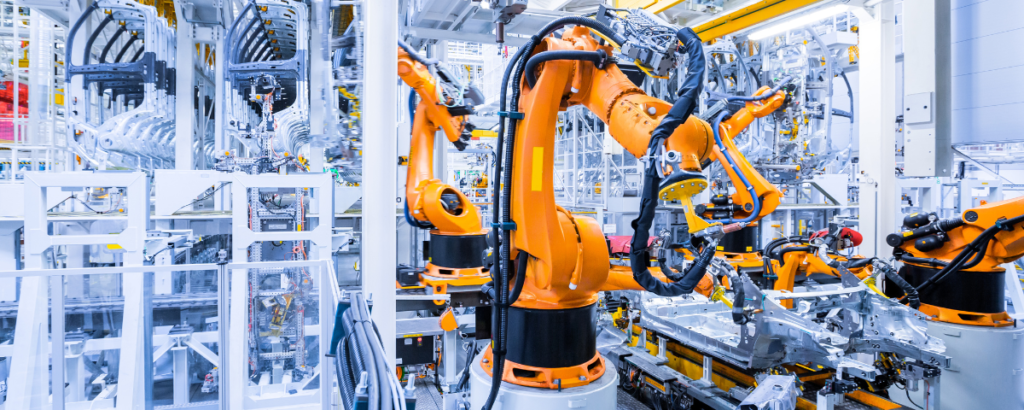
Automation and Customisation: Tailor-made Technology for Artisan Production
In an increasingly innovation-driven world, automation is becoming a fundamental pillar of craft production. With the ability to integrate advanced technologies with a high degree of customisation, craft businesses can improve their production processes while maintaining the authenticity that distinguishes them. This article will explore how automation, combined with customised technologies, can represent an opportunity for small and medium-sized craft enterprises.
Automation in Handicraft Production: A New Era
Handicraft production is historically associated with manual labour, attention to detail and superior quality. However, with the introduction of automated solutions, these companies are finding a balance between tradition and innovation. Automation makes it possible to optimise repetitive processes, reduce human error and increase efficiency without compromising product quality.
For example, the use of automated machinery in the processing of valuable materials ensures precision and uniformity, which are key elements in meeting the growing demand for customised products.
Customisation and Automation: A Winning Combination
Whereas in the past automation was synonymous with standardisation, today it is possible to combine it with a high degree of customisation. Advanced technologies such as CAD (Computer-Aided Design) and CAM (Computer-Aided Manufacturing) systems allow unique products based on specific customer requirements.
For artisan production, this capability represents a significant competitive advantage. Companies can offer customised solutions while maintaining high production standards, meeting the needs of increasingly demanding consumers who are oriented towards buying exclusive products.
Advanced Technology for Small and Medium Enterprises
Technology applied to automation is no longer exclusive to large industries. Today, even small and medium-sized companies can benefit from affordable and scalable innovative tools. Compact robotic systems, IoT (Internet of Things) sensors and integrated management software make it possible to improve every stage of the production process.
These solutions make it possible to monitor the efficiency of operations in real time, ensure the traceability of materials and optimise the use of resources. For craft production, this translates into reduced costs and increased sustainability.
The Role of Industry 4.0 in Handicraft Production
The concept of Industry 4.0 is revolutionising the way companies approach manufacturing. By integrating smart machinery, data and automation, companies can create highly connected and adaptable production ecosystems.
For example, a ceramic workshop can use automated machines to shape and glaze products, reducing processing time without compromising the unique design that characterises each piece. Similarly, a winery can implement automation systems to control fermentation, ensuring wine quality and optimising resources.
Challenges and Opportunities of Automation in Artisan Production
The adoption of automation presents some challenges, particularly for artisanal companies accustomed to traditional methods. Investing in advanced technology requires training, time and financial resources. However, the long-term benefits far outweigh the initial obstacles.
The opportunities offered by automation include:
Increased productivity: Reduced processing times and improved efficiency.
Consistent quality: Standardisation of processes without losing the craftsmanship touch.
Market expansion: Ability to cater to a wider customer base through increased production capacity.
Automation and Sustainability: A Shared Goal
Another benefit of automation is its contribution to sustainability. Modern technologies make it possible to reduce waste, optimise energy use and improve material management. For craft production, this means being able to respect the environment without sacrificing product quality.
One example is the use of machinery that optimises the use of raw materials, minimising waste and promoting a more responsible approach to natural resources.
How to Choose the Right Technological Solutions
The choice of automation technology depends on the specific needs of each craft production. Here are some factors to consider:
- Scalability: The solution must be able to grow with the business.
- Flexibility: It is important that the machinery can adapt to different types of production.
- Technical support: Reliable support is essential to ensure the continuous operation of the equipment.
- Cost-benefit: The initial investment must be justified by the long-term benefits.
Automation: The Future of Artisan Production
Looking to the future, it is clear that automation will continue to play a crucial role in manufacturing. Companies that know how to integrate advanced technologies with a customised approach will have a lasting competitive advantage.
Adopting these solutions does not mean giving up craftsmanship, but rather enhancing it in a modern and innovative context. The combination of tradition and automation represents the future of a sector that can continue to prosper, responding to the challenges of the global market.
Want to find out more?
Automation is transforming the world of craft production, opening up new avenues for innovation and growth. If you want to learn more about other topics related to technology, customisation and solutions for craft businesses, visit our blog and stay up-to-date with the latest news!



